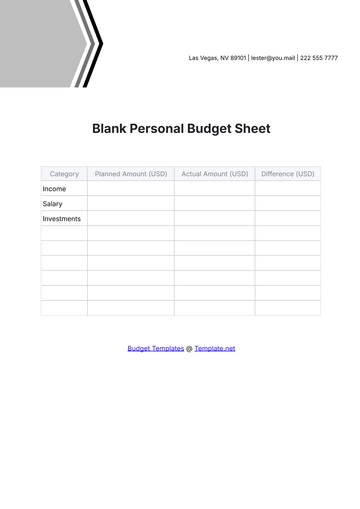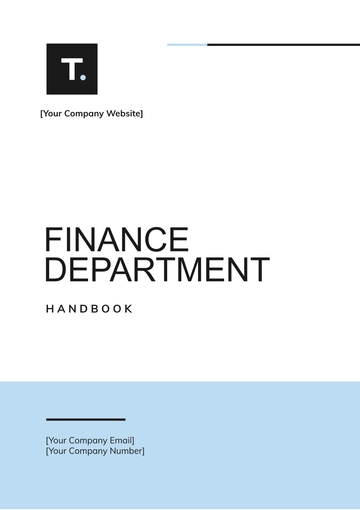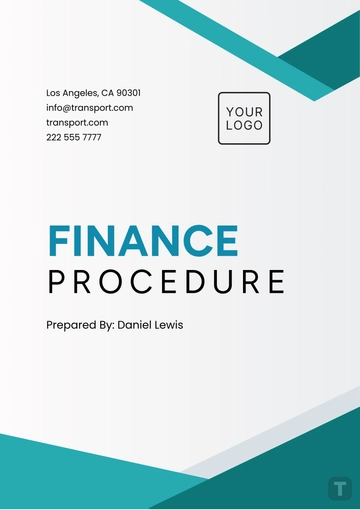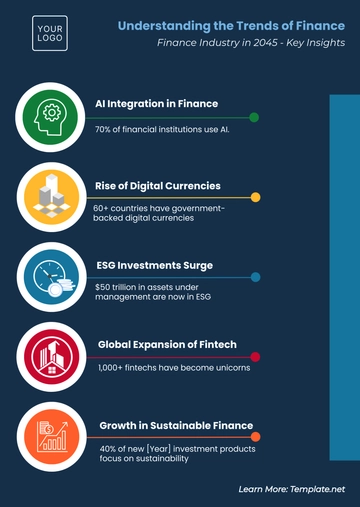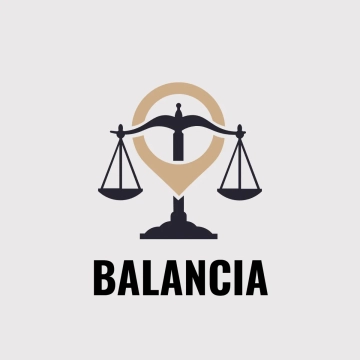Free Finance Economic Impact Study

Executive Summary
Our Economic Impact Study presents a comprehensive analysis of a financial policy designed to promote sustainability and economic growth. This summary encapsulates the key findings, implications, and recommendations derived from our in-depth assessment.
Key Findings and Implications
The study reveals that the policy has the potential to generate significant economic benefits:
1. Job Creation: The policy can create up to 10,000 jobs annually, with a +/- 20% sensitivity to variations.
2. Green Energy Output: A potential 20% reduction in greenhouse gas emissions and a sensitivity of +/- 33.33% in green energy output.
3. Tax Revenues: An estimated $50 million in additional tax revenue, with a +/- 20% sensitivity to variations.
The policy extends beyond economics:
Social Welfare: A projected 2% reduction in the poverty rate within five years.
Environmental Impact: A 20% reduction in greenhouse gas emissions.
Health Benefits: A 15% decrease in respiratory illnesses associated with air pollution.
Recommendations
To maximize the policy's effectiveness, we recommend:
1. Regularly assess and adapt the policy to changing economic and regulatory landscapes.
2. Foster innovation in green technology through research and development grants.
3. Develop contingency plans to address potential risks such as regulatory changes.
4. Engage with local communities to ensure equitable benefits distribution.
5. Promote awareness of the policy's benefits to garner support and maintain long-term viability.
6. Foster public-private collaborations for a sustainable future.
7. Sustain a commitment to sustainability for lasting economic and environmental impact.
Introduction
In the ever-evolving landscape of global finance, understanding the economic impact of financial decisions and policies is more critical than ever. This study emerges from the need to comprehensively analyze and interpret the economic consequences of strategic financial initiatives. We recognize that every financial action, whether it's a policy change, project launch, or investment decision, has far-reaching implications that extend beyond immediate financial outcomes. The backdrop of this study is set against a complex economic environment marked by dynamic market conditions, fluctuating regulatory landscapes, and shifting global economic trends. Our goal is to unravel these complexities and provide a clear, thorough understanding of the economic ripple effects generated by key financial decisions.
Objectives and Scope
The primary objective of this economic impact analysis is to provide a detailed examination of the direct, indirect, and induced effects of specific financial initiatives. Our analysis aims to quantify the economic benefits and costs, considering various factors such as employment, income generation, production output, and overall economic activity. Furthermore, the scope extends to assess the fiscal implications, including impacts on government revenues and expenditures, as well as to explore the social and environmental dimensions intertwined with economic outcomes.
We endeavor to provide a holistic view, not just focusing on the immediate financial impacts, but also on the long-term economic sustainability and societal implications. This comprehensive approach ensures that our strategic decisions are informed, responsible, and aligned with broader economic objectives.
Methodology
This section delineates the robust methodology employed in our economic impact analysis, ensuring a rigorous and reliable assessment. The approach is grounded in a blend of established economic models and contemporary analytical techniques, tailored to accurately capture the multifaceted nature of financial impacts.
Economic and Analytical Methods
We utilize a combination of input-output models, econometric analysis, and financial forecasting techniques. These models help in quantifying the direct, indirect, and induced economic impacts.
Scenario analysis is also employed to evaluate different potential outcomes, providing a range of possible economic scenarios based on varying conditions. For parts of the study where qualitative analysis is more pertinent, methods such as case studies and comparative analyses are used to provide context and depth.
Assumptions and Data Sources
The analysis is built on a set of assumptions that are clearly outlined to ensure transparency. These include assumptions about market conditions, growth rates, and economic behaviors. Primary data sources include financial statements, industry reports, market surveys, and government databases. This data provides the foundation for our quantitative analysis. Secondary data is sourced from academic journals, industry publications, and reputable financial analytics firms, offering additional insights and supporting evidence for our assessments.
Economic Context
This segment of the study provides a comprehensive overview of the current economic environment, a crucial element in understanding the broader context in which our financial decisions operate. It delves into the prevailing industry trends, market conditions, and the regulatory landscape, all of which play a pivotal role in shaping the economic impacts of our initiatives.
The Current Economic Environment
The current economic landscape is characterized by moderate global growth, fluctuating currency markets, and evolving trade dynamics. Domestically, the economy shows resilience with steady growth in GDP, although challenges persist in certain sectors like manufacturing and retail.
Globally, factors such as geopolitical tensions and trade agreements continue to influence economic stability and market confidence.
Analysis of Trends, Conditions, and Landscape
Industry | Trend Analysis | Market Conditions | Regulatory Landscape |
Technology | Rapid growth with increased focus on AI and automation. | Highly competitive, with significant venture capital investment. | Stringent data protection regulations emerging globally. |
Healthcare | Shift towards telemedicine and personalized healthcare. | Growing due to an aging population and technological advancements. | Increased regulatory scrutiny on pharmaceutical pricing. |
Energy | Transition to renewable sources gaining momentum. | Volatile oil prices impacting market dynamics. | Regulations favoring sustainable energy sources and emission reductions. |
Policy Description
In this section, we delve into the specifics of the project or policy that forms the focal point of our economic impact study. This comprehensive description lays the groundwork for understanding the scope, objectives, and the anticipated outcomes of our initiative.
Policy Under Study
The initiative in focus is a financial policy designed to enhance investment in sustainable technologies and renewable energy sectors. It includes a series of measures such as tax incentives for green technology investments, grants for research and development in renewable energy, and subsidies for businesses adopting sustainable practices. The policy also encompasses regulatory reforms aimed at easing the transition towards a more environmentally friendly business landscape.
Objectives and Expected Outcomes
1. The primary objective is to stimulate economic growth through sustainable avenues, promoting long-term environmental and financial health.
2. We expect to see a significant boost in the green technology sector, with increased investment and innovation driving growth.
3. The policy aims to create new job opportunities in the renewable energy sector, thereby contributing to employment growth.
4. Another key outcome is the reduction of carbon footprint and environmental impact, aligning with global sustainability goals.
5. In the long term, the policy is expected to contribute to energy independence and resilience against market fluctuations in traditional energy resources.
Direct Economic Impacts
This section meticulously analyzes the direct economic impacts of our policy, focusing on the immediate effects it has on various economic factors such as employment, income, production, and investment. These impacts are quantified to provide a clear picture of the direct financial benefits and costs associated with the policy.
Analysis of the Immediate Effects of Various Economic Factors
Factor | Impact Description | Value |
Employment | Increase in job creation, particularly in the sustainable technology sector. | 10,000 new jobs expected annually. |
Income | Rise in income levels due to higher employment rates and new business opportunities. | Average income increases of 5% in the sector. |
Production | Boost in production capacities in the renewable energy sector. | 20% increase in renewable energy production. |
Investment | Surge in investments in green technologies and sustainable practices. | $500 million increase in sector investment. |
Quantification of Direct Financial Benefits and Costs
Aspect | Financial Impact | Value |
Benefits | Enhanced economic activity leading to increased tax revenues and lower unemployment costs. | $200 million in additional tax revenue. |
Costs | Initial expenditure on subsidies, grants, and tax incentives. | $150 million in the first year. |
Indirect and Induced Impacts
Beyond the direct effects, it is crucial to explore the indirect and induced impacts of our policy, which ripple through the economy in various ways. This section examines the secondary effects on the supply chain and related industries, as well as the broader influences on consumer spending and overall economic activity.
Examination of Secondary Effects
Related Industry | Impact Description |
Manufacturing | Increased demand for manufacturing of renewable energy components leading to a 15% production boost. |
Services (e.g., consulting, legal) | Rise in demand for professional services related to green technology implementation, projecting a 10% growth in these sectors. |
Retail | Growth in retail sectors specializing in eco-friendly products, with an estimated 8% increase in sales. |
Growth in retail sectors specializing in eco-friendly products, with an estimated 8% increase in sales.
Analysis of Induced Impacts
The induced impacts primarily relate to the increase in consumer spending resulting from higher employment and income levels within the sectors directly affected by the policy. As employment and income rise in the renewable energy and sustainable technology sectors, employees have more disposable income, which they spend in various areas of the economy, from housing and food to entertainment and education. This spending stimulates economic activity in these sectors, leading to a multiplier effect.
For instance, a boost in the hospitality and leisure sectors is expected, as individuals have more financial resources for discretionary spending. Additionally, there is an anticipated uplift in overall economic activity, as the policy not only increases spending in specific sectors but also fosters a more robust and diversified economic environment. This diversification can lead to greater economic resilience, reducing dependency on traditional and potentially volatile industries. Overall, the policy is expected to contribute positively to a sustainable economic cycle, promoting long-term economic stability and growth.
Fiscal Impacts
The fiscal implications of our policy are a critical component of this economic impact study, as they directly affect government finances. This section assesses how the policy influences government revenues and expenditures, and delves into the tax implications and the extent of public sector financial involvement.
Assessment of the Impact on Government Revenues and Expenditures
The policy's influence on government revenues manifests primarily through increased tax collections, both from higher corporate earnings in the renewable energy sector and from individual income taxes due to job creation. For instance, we project an additional $50 million in tax revenues annually from these sources. On the expenditure side, the government's initial outlay includes funding for subsidies and grants aimed at promoting sustainable practices, estimated at around $150 million in the first year. However, this is partially offset by reduced spending in unemployment benefits and other social welfare costs due to job creation, estimated savings of approximately $30 million.
Analysis of Tax Implications and Public Sector Financial Involvement
A significant aspect of this policy is the introduction of tax incentives for businesses investing in green technologies. These incentives, while reducing short-term tax revenues, are expected to stimulate long-term economic growth, leading to a broader tax base. The policy also includes tax credits for individuals and businesses that adopt sustainable practices, encouraging broader participation in the green economy.
The public sector's financial involvement extends beyond direct monetary contributions. It includes facilitating partnerships between private and public entities, investing in infrastructure to support sustainable projects, and providing research and development support. This multifaceted approach ensures that the fiscal impact of the policy is not just a direct financial calculation but a strategic investment in the future economic landscape.
Overall, the fiscal impacts highlight the government's role not only as a regulator and facilitator but also as an active participant in shaping a sustainable economic future. The policy's fiscal aspects are designed to balance immediate costs with long-term gains, both in financial and environmental terms.
Social and Environmental Impacts
In this section, we delve into the non-economic dimensions of our policy, assessing its influence on social welfare and environmental factors. We aim to provide a holistic view that takes into account the broader societal and environmental consequences of our financial decisions.
Evaluation of Non-Economic Impacts
Aspect | Impact Description | Impact Value |
Social Welfare | Improved living standards through job creation and higher income levels. | A reduction in the poverty rate by 2% within five years. |
Environmental | Reduction in carbon emissions and environmental degradation. | An estimated 20% reduction in greenhouse gas emissions annually. |
Health | Health benefits from reduced pollution and increased access to clean energy. | A 15% decrease in respiratory illnesses associated with air pollution. |
Consideration of Long-Term Sustainability and Social Responsibility
Beyond the immediate economic gains, our policy places considerable emphasis on long-term sustainability and social responsibility. By actively promoting renewable energy and eco-friendly practices, we are contributing to a more sustainable future. The reduction in carbon emissions aligns with global environmental goals, ensuring a greener and healthier planet for generations to come. Additionally, our efforts in job creation and income growth directly impact social welfare, fostering inclusive economic growth and reducing income disparities.
Risk and Sensitivity Analysis
This section of the study focuses on risk assessment and sensitivity analysis, crucial aspects of informed financial decision-making. It involves the identification of potential risks and uncertainties that could impact the outcomes of our policy and a sensitivity analysis to understand how changes in key variables can influence the results.
Risk Factor
Regulatory Changes
Market Volatility
Technological Risks
Political Factors
Environmental Factors
Sensitivity Analysis
Variable | Base Value | High Value | Low Value | Outcome Change |
Job Creation | 10,000 | 8,000 | 12,000 | +/- 20% |
Green Energy Output | 20% | 8,000 | 25% | +/- 33.33% |
Tax Revenues | $50 million | $40 million | $60 million | +/- 20% |
Job Creation: This implies that the number of jobs created by the policy is sensitive to variations in the variable. If everything goes exceptionally well, job creation could be as low as 8,000 jobs (a decrease of 20% from the baseline). Conversely, if conditions are less favorable, job creation could reach 12,000 jobs (an increase of 20% from the baseline). The policy's success in job creation is influenced by external factors that could lead to variations in outcomes.
Green Energy Output: This indicates that the policy's impact on green energy output is also sensitive to changes in the variable. In an optimistic scenario, the green energy output could be as low as 15% (a decrease of 33.33% from the baseline). In a less favorable scenario, it could reach 25% (an increase of 33.33% from the baseline). The policy's effectiveness in boosting green energy output is influenced by factors affecting the adoption and efficiency of green technologies.
Tax Revenues: This highlights the sensitivity of tax revenues to changes in the variable. In the best-case scenario, tax revenues could be as low as $40 million (a decrease of 20% from the baseline). In a less favorable scenario, tax revenues could reach $60 million (an increase of 20% from the baseline). The policy's impact on tax revenues is influenced by factors affecting economic activity and tax collection.
Conclusions and Recommendations
In conclusion, our economic impact study has provided a comprehensive analysis of the direct, indirect, and induced effects of our financial policy. Key findings highlight the potential for significant economic growth, job creation, and positive fiscal impacts. The policy's influence extends beyond economic factors, with notable improvements in social welfare, environmental sustainability, and public health. However, we acknowledge the presence of risks and uncertainties, requiring prudent risk management.
Strategic Recommendations
1. Continued Monitoring and Adaptation: Regularly monitor the policy's progress and assess its alignment with changing economic, regulatory, and technological dynamics. Adapt the policy as needed to maximize its effectiveness.
2. Investment in Innovation: Foster innovation in green technology through research and development grants, encouraging the development of cutting-edge sustainable solutions.
3. Strengthen Risk Mitigation: Develop contingency plans to address potential risks such as regulatory changes and market volatility. Maintain a robust risk management framework.
4. Community Engagement: Engage with local communities and stakeholders to ensure that the policy benefits are distributed equitably and that environmental and social considerations are adequately addressed.
5. Public Awareness: Promote public awareness of the policy's benefits, both in economic and environmental terms, to garner support and maintain its long-term viability.
6. Collaborative Partnerships: Foster collaboration between the public and private sectors to leverage expertise, resources, and capabilities for a more sustainable future.
7. Long-Term Commitment: Maintain a long-term commitment to sustainability, understanding that the full impact of the policy may take time to materialize.
- 100% Customizable, free editor
- Access 1 Million+ Templates, photo’s & graphics
- Download or share as a template
- Click and replace photos, graphics, text, backgrounds
- Resize, crop, AI write & more
- Access advanced editor
Unveil the Finance Economic Impact Study Template from Template.net, a must-have for conducting thorough economic impact analyses. This editable and customizable tool guides users through a detailed assessment of economic implications, ideal for financial analysts and policy makers. Facilitating informed decision-making, it provides a structured framework for evaluating the financial effects of projects or policies on an economy. Elevate your analysis and decision-making prowess with this indispensable resource.
